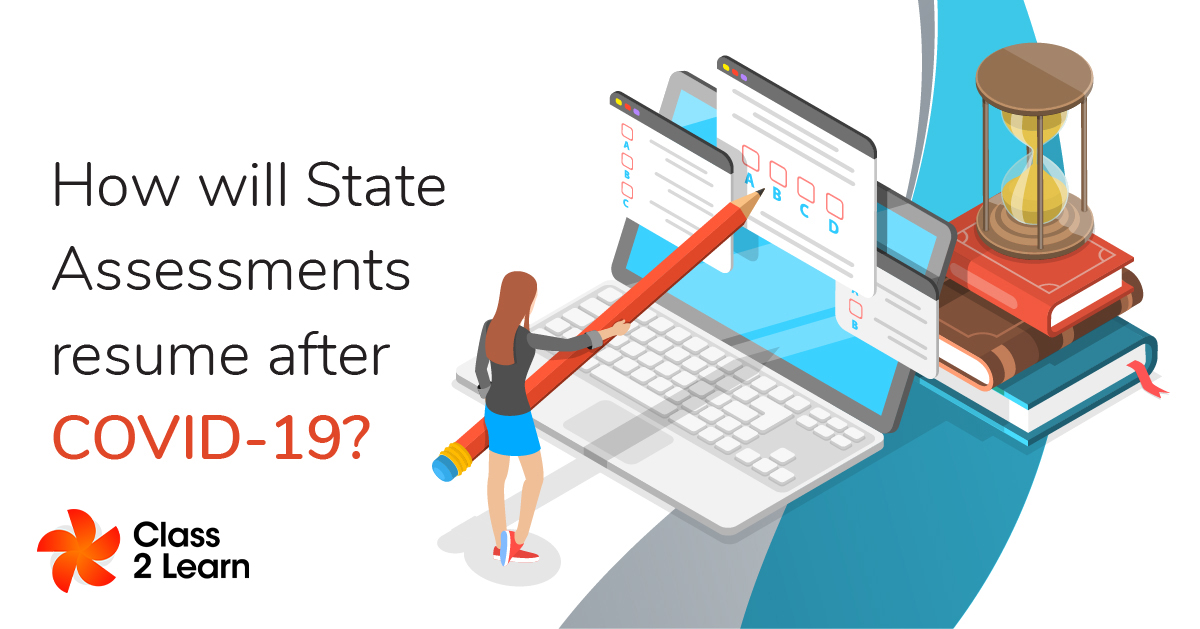The COVID-19 pandemic forced many changes to public schools, including the suspension of annual state assessments. Educators and parents are still wondering when and how testing will resume in the spring of 2021. Issues such as disrupted learning, remote assessments, and inconsistencies between districts and states are looming issues for the state education systems as they try to resume their annual summative assessments this year.
2020 Cancellations
The pandemic hit just before the 2020 testing period, closing schools nationwide, and led the federal government to suspend the requirement for states to run statewide tests for students in grades 3-8 and once in high school. While this relaxed a great deal of pressure on schools and students, it left administrations without the data to understand how students were performing. Since the fall of 2020, educators and policymakers have been exploring plans to restore testing in 2021, even accounting for the fact that many schools will still be using hybrid or remote learning in March and April.
Remote Testing issues
Even before the pandemic, many schools had adopted online testing practices, requiring every student to complete the exam entirely on a computer so that the results could be quickly evaluated and uploaded to administrators. However, testing was conducted in waves in schools, so various student groups took the exam at various times. Schools are currently looking toward completely remote online testing. Test vendors said at a conference in December that “remote administration is viable and may be provided by suppliers as long as states verify that students have access to permitted devices and the internet.”
The test vendors, represented by Steve Kromer from CambiumAssessment, Lisa Lepic from Pearson, and Sandy Wiese from Data Recognition Corporation, discussed that states are looking into shortening the tests to make them more manageable for remote administration by eliminating field test items.
Vendors will need to test student devices in advance to make sure that there are no problems with them before testing starts, and to provide a wider range of customer support. Educators will need to prepare to serve as remote proctors in the same role that they held in person before. Ultimately, they argued that assessments could take place with relative normalcy in the spring, though issues could vary widely depending on the conditions at the state or district level.
Fears of Learning Loss
Educators, administrators, and parents are concerned that over the past year, many students have failed to progress educationally or have regressed, which would be reflected badly in state assessments when they resume. Students have missed time in school or had trouble completing coursework in full due to remote learning.
Students whose parents were less able to support them in remote learning suffered especially badly, unfairly skewing the results of any performance measurements. A survey of parents from JerseyCAN and the New Jersey Children’s Foundation last found that just a quarter of them felt that their districts were doing enough to measure if students were staying on grade level.
Learning loss may result in worse scores in the 2021 assessments and this might continue into 2022, which is why some administrators are considering whether to reduce the weighting of the tests or push them further into the future. However, going two years without evaluations of students could be even more damaging, as there would be no meaningful data about education performance during the pandemic.
Read More: Online Tools for Making Interactive Lessons, Quizzes, and Games
Potential Modifications to Testing
Some changes will take place with the support of the federal government depending on the capabilities of states to perform testing. Tests could be waived in certain states that are not capable of giving tests, or there could be other changes. States could be permitted to waive the diagnostic component required to judge student performance. The requirement that tests be standards-based could be relaxed, allowing states to make less comprehensive tests that take less time to administer and account for learning disruptions.
States could also reduce the number of students tested by only testing certain grade levels rather than all 3-8 grades, or use sampling to only test a small proportion of students in each state. Waivers given to individual schools could prevent them from being identified as failing schools due to poor test performance this year.
States will likely be given the flexibility to determine how to proceed, but the education system is working toward a way to resume state testing in 2022 despite continuing disruptions. For the most part, the assessment system will be able to operate so student evaluation can resume this year. While test scores may suffer, the information from them will shape how schools evaluate the effectiveness of distance learning and how badly the pandemic harmed K-12 education.





Add comment